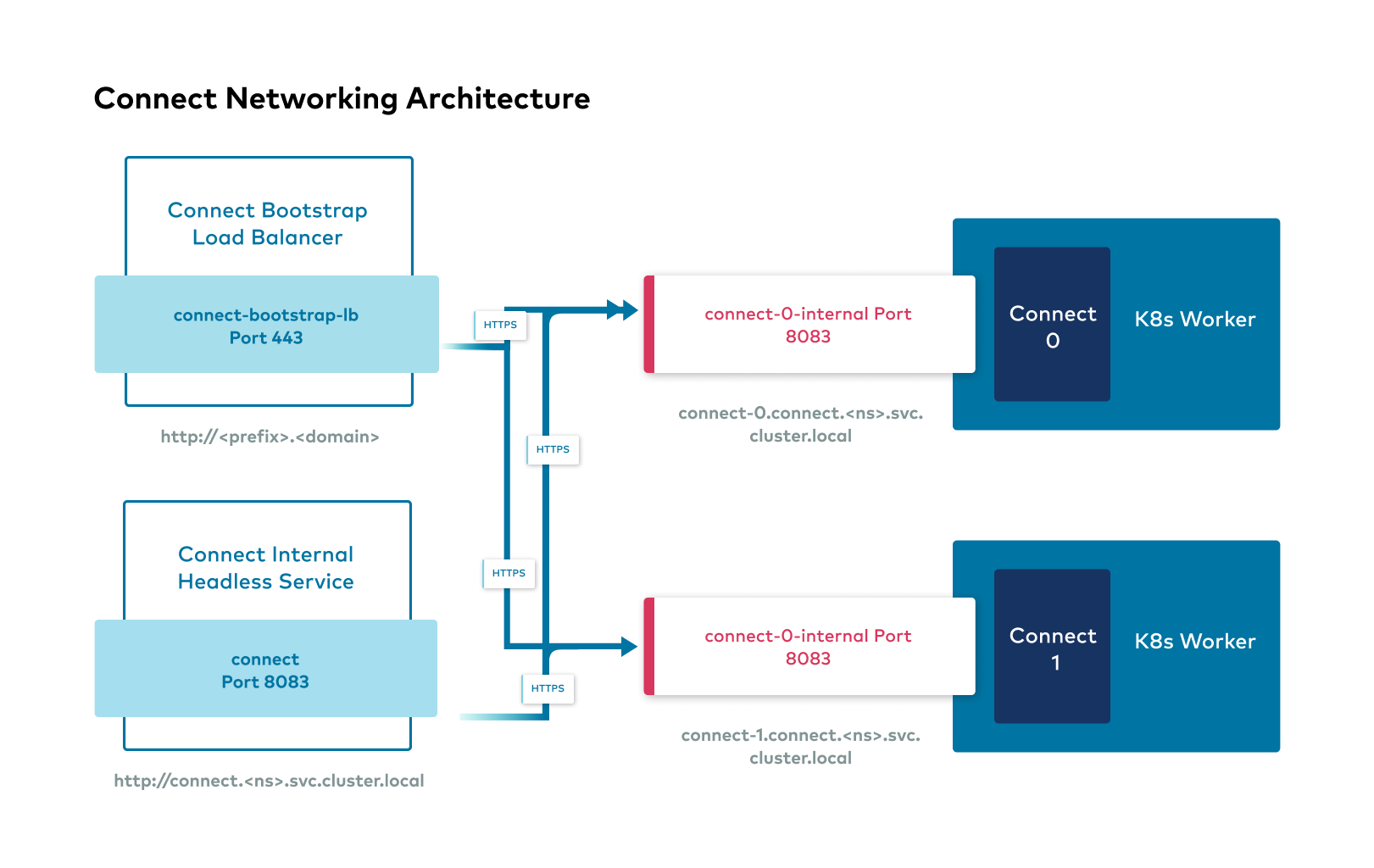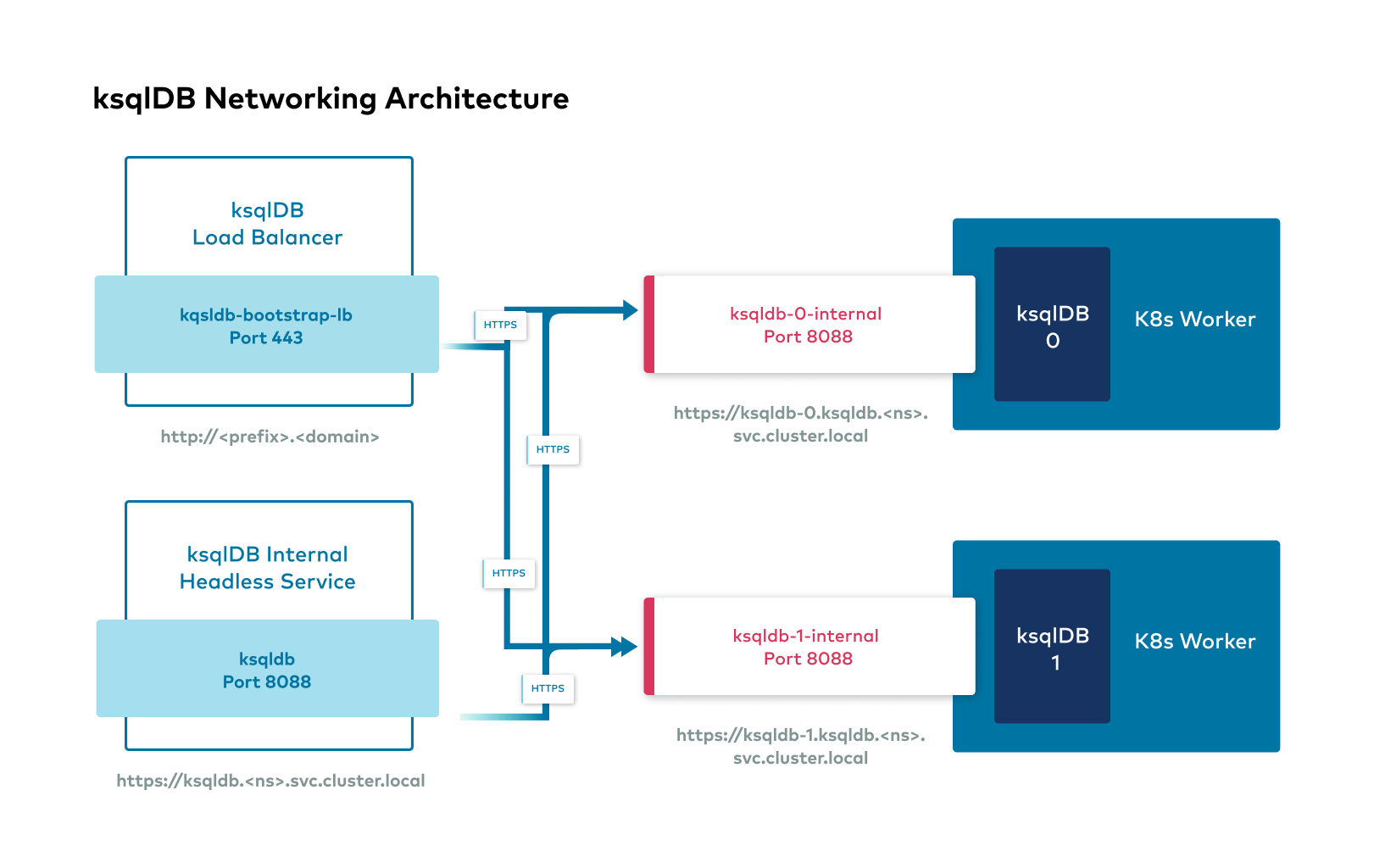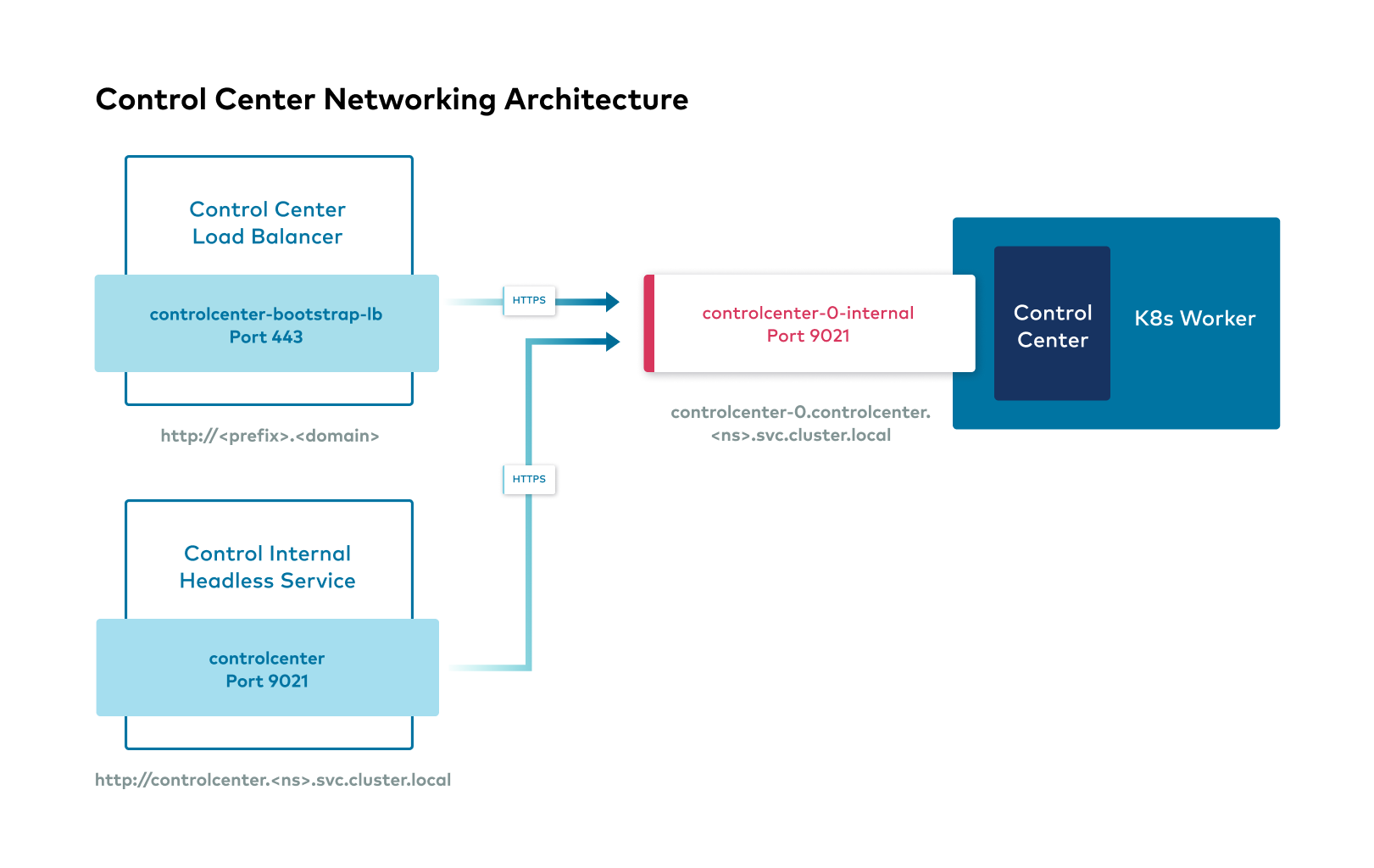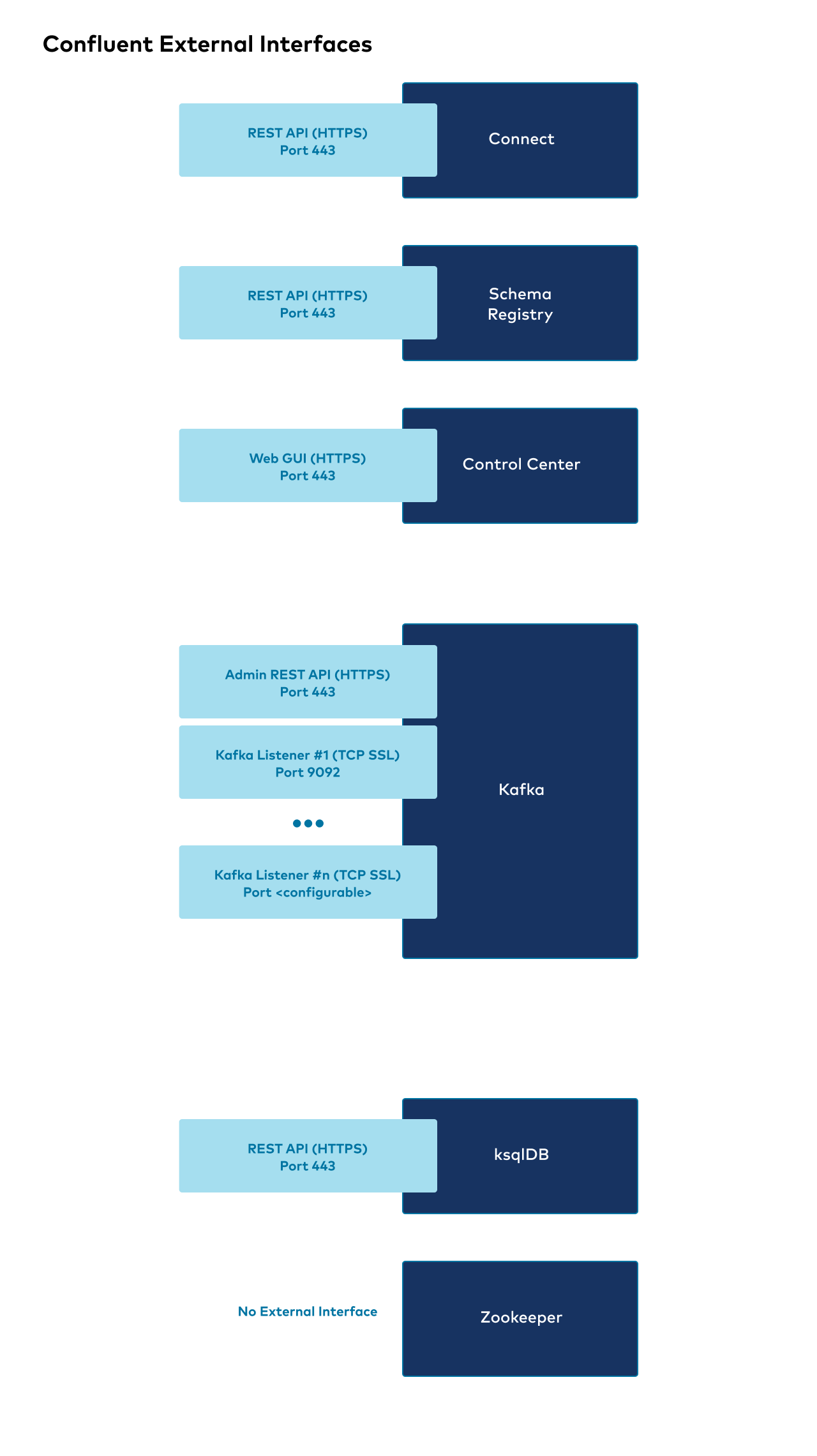Confluent Platform Networking Overview
This section of documents describes the networking configuration options in Confluent for Kubernetes (CFK) to expose Kafka and other Confluent Platform components to clients.
The following images show the networking interfaces available for Confluent Platform components.




Connect to Confluent components from outside the Kubernetes cluster
The following shows the high level overview of external interfaces available for Confluent Platform.

The following are the external access methods CFK supports. You can configure each component with one method, and once you enable external access one method and deploy Confluent, you cannot change to another external access method.
- Load balancers
Clients connect to Confluent Platform using the Kubernetes provider’s load balancer.
- Node ports
Clients connect to Confluent Platform at specified static ports (the NodePort) on the Kubernetes worker node (or via customer-managed networking infrastructure that can forward traffic to those ports).
- Port-based static access
A Kubernetes Ingress controller manages clients’ connection to Kafka using port-based routing.
- Host-based static access
A Kubernetes Ingress controller manages clients’ connection to Kafka using host-based routing.
- Routes (for OpenShift)
Clients connect to Confluent Platform using OpenShift routes.
For the additional configuration steps required to allow external access to Metadata Service (MDS), see Configure Networking for RBAC.
Connect to Kafka from inside the same Kubernetes cluster
Confluent components deployed by CFK within the same Kubernetes cluster and client applications within the same Kubernetes cluster connect to Kafka over Kafka’s internal listener at the following addresses:
If Kafka cluster is deployed to the same namespace as this client / component:
<kafka-component-name>:9071If Kafka cluster is deployed to a different namespace as this client / component:
<kafka-component-name>.<kafka-namespace>.svc.cluster.local:9071